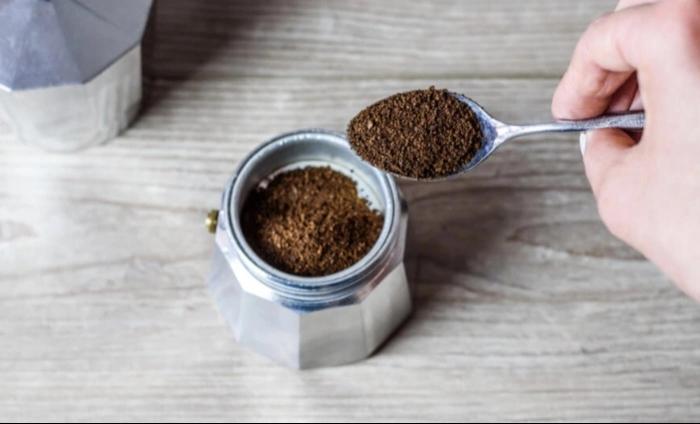Espresso is a concentrated coffee beverage brewed by forcing hot water through finely-ground coffee. One of the most common questions among home baristas is how much coffee to use. Measuring coffee in tablespoons is convenient, but precision matters for the perfect shot. This article explores the ideal coffee-to-water ratio, how tablespoons translate to espresso, and tips for consistency.
Understanding Espresso Measurements
Espresso is all about balance. Using too little coffee results in a weak, under-extracted shot, while too much can make it bitter and over-extracted. The standard measurement for espresso is grams, but not everyone has a scale. Tablespoons offer a practical alternative, though they are less precise.
A single shot of espresso typically uses 7 to 9 grams of coffee, while a double shot requires 14 to 18 grams. Since coffee density varies, a tablespoon can hold between 5 to 7 grams of ground coffee, depending on grind size and how it’s packed.
How Many Tablespoons for a Single Espresso Shot?
For a single shot, you’ll need about 1.5 to 2 tablespoons of coffee. This assumes a medium-fine grind, which is standard for espresso. If your coffee is lightly packed, you may need slightly more. A heaping tablespoon can reach up to 7 grams, while a level tablespoon may only be 5 grams.
Since precision is key in espresso, using a scale is best. However, if you’re relying on tablespoons, start with 1.5 and adjust based on taste. A weak, sour shot may need more coffee, while a bitter, harsh shot suggests you’ve used too much.
How Many Tablespoons for a Double Espresso Shot?
A double shot is the most common serving in cafes. It requires roughly 14 to 18 grams of coffee, translating to 2.5 to 3.5 tablespoons. Again, grind size and packing density affect this.
For consistency, use the same scooping method each time. Lightly spoon the coffee into the tablespoon without pressing it down, then level it off. This helps maintain a reliable measurement.
Factors Affecting Coffee Measurement
Several variables influence how much coffee you should use:
Grind Size
Espresso requires a fine grind, almost like powdered sugar. Finer grinds pack more tightly, so a tablespoon will hold more coffee compared to a coarser grind. If you adjust your grind setting, you may need to recalibrate your measurements.
Coffee Bean Density
Different beans have different densities. Dark roasts are less dense than light roasts due to prolonged exposure to heat. This means a tablespoon of dark roast may weigh slightly less than a light roast.
Tamping Pressure
Tamping compresses the coffee grounds in the portafilter. If you tamp harder, the coffee becomes more compact, increasing extraction time. A lighter tamp may require a slightly larger dose to achieve the same resistance.
Why Weight Becomes More Accurate Than Volume
Tablespoons are convenient but inconsistent. A scale eliminates guesswork by measuring exact grams. Professional baristas always weigh their coffee because even a 1-gram difference can alter flavor.
If you’re serious about espresso, invest in a digital scale with 0.1-gram precision. This ensures repeatability, especially when dialing in a new coffee.
Adjusting for Taste
Espresso brewing is subjective. Some prefer a stronger, more intense shot, while others like a milder flavor. If your espresso tastes:
- Sour or weak – Increase the dose by half a tablespoon.
- Bitter or harsh – Reduce the dose slightly.
Small adjustments can make a big difference. Keep notes on what works best for your setup.
Common Mistakes When Measuring Espresso
Using the Wrong Grind
A coarse grind won’t extract properly, leading to sour espresso. If your shot pulls too fast (under 20 seconds), your grind may be too coarse, or you may not be using enough coffee.
Inconsistent Scooping
Scooping directly from the bag can compress the coffee, leading to uneven measurements. Instead, use a spoon to transfer coffee into the tablespoon gently.
Ignoring Freshness
Old coffee loses its oils and aromas, resulting in flat-tasting espresso. Always use freshly roasted beans (within 2-4 weeks) for the best flavor.
Alternative Measuring Methods
If you don’t have a scale or tablespoons, you can use:
- Pre-measured pods – These ensure consistency but limit customization.
- Coffee scoops – Many espresso machines come with a scoop designed for their baskets.
However, these methods still lack the precision of weighing.
Final Recommendations
For the best espresso:
- Use a scale for accuracy.
- If using tablespoons, start with 1.5 for a single shot and 3 for a double.
- Adjust based on taste and extraction time (ideal shot time is 25-30 seconds).
- Keep your grind fine and consistent.
Espresso is both a science and an art. While tablespoons provide a quick estimate, mastering espresso requires attention to detail. With practice, you’ll find the perfect balance for your preferred flavor.
Conclusion
Measuring coffee with tablespoons is a practical starting point, but precision leads to better espresso. A single shot needs about 1.5 to 2 tablespoons, while a double shot requires 2.5 to 3.5. Factors like grind size, bean density, and tamping pressure affect the outcome. For consistent results, a scale is the best tool. Experiment, take notes, and adjust until you find your perfect shot. Happy brewing!
Related topics:
What is the Best Espresso Powder for Baking?
How to Use Nespresso Lattissima One


